MercoPress. South Atlantic News Agency
Tag: soybean
-
Saturday, May 12th 2018 - 08:45 UTC
Brazil becomes world's largest producer of soybeans for the first time
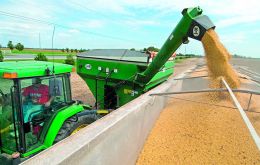
Brazil will surpass the United States as the largest producer of soybeans this year, taking over the top ranking for the first time in history, oilseeds crusher group Abiove said on Friday. The U.S. is expected to harvest 116.48 million tons of soybeans later on in 2018, falling short of Brazil’s estimated collection of 117 million tons for its crop year that is just drawing to a close, Abiove said, citing United States Department of Agriculture figures released on Thursday.
-
Wednesday, May 9th 2018 - 08:19 UTC
Brazilian farmers optimism sky high with increasing grain prices and cheap credit
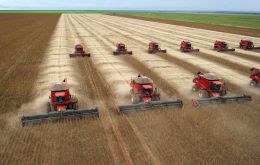
Farm equipment manufacturers in Brazil are expecting g on strong sales this year, boosted by a second straight bumper soy crop and rising grain prices, which will more than offset weakness in the sugar cane sector, they said at a major trade show. Some machinery producers are forecasting sales growth as high as 8% in 2018 as farmers’ confidence rises and record-low interest rates encourage them to borrow and invest.
-
Thursday, May 3rd 2018 - 08:44 UTC
Uruguay´s soybean crop forecasted to drop 43% because of devastating drought
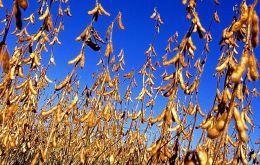
Due to the recent devastating drought, soybean production in Uruguay is forecast to drop to 1.7 million tons in 2017-18, according to an April 30 Global Agricultural Information Network (GAIN) report from the U.S. Department of Agriculture.
-
Thursday, April 26th 2018 - 08:46 UTC
Trade skirmish: China halts purchases of US soybeans, gives priority to Brazil
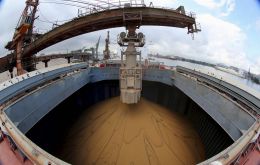
China’s purchases of U.S. soybeans have come to a grinding halt, trade and industry sources say, as fears of further action by Beijing to curb imports of U.S. crops following last week’s anti-dumping move on sorghum rattles the agriculture industry.
-
Thursday, April 26th 2018 - 08:31 UTC
Brazil soybean planting forecast to break a record for the ninth year running
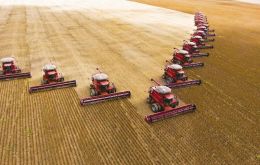
Soybean planted area in Brazil is forecast to set a record for the ninth consecutive year at 35.8 million hectares, according to an April 24 Global Agricultural Information Network (GAIN) report from the U.S. Department of Agriculture.
-
Wednesday, April 11th 2018 - 18:35 UTC
Argentina imports 120.000 tons of soy-beans from United States

Argentina, the world’s third biggest soy producer, booked its largest purchase of U.S. soybeans in 20 years on Tuesday after drought cut its harvest, forcing crushers there to turn to imports. The surprise move pushed Chicago soybean futures to a one-month high, in the latest development to upend global soy trading after top buyer China last week proposed tariffs on U.S. imports amid an intensifying Washington-Beijing trade dispute.
-
Wednesday, April 11th 2018 - 09:21 UTC
Drought will cost Argentina's herd up to a million head
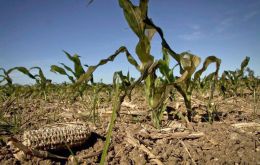
Argentina’s herd will shrink by up to 1 million head of cattle next year as ranchers facing scorched pastures after the worst drought in decades decide to slaughter females rather than grow their herds, analysts said.
-
Tuesday, April 3rd 2018 - 08:48 UTC
Brazil subsidized loans for the 2018/19 agriculture program will reach US$ 58bn
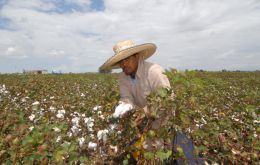
Brazil's Agriculture Ministry plans to increase funds available to finance the farm sector, an official announced, noting that a decline in inflation has allowed the government to boost funding in a country that is the world’s largest exporter of staples like soybeans and coffee.
-
Friday, March 23rd 2018 - 09:06 UTC
Argentina expanded 2.9% last year; 2018 challenging given the persistent drought effect on crops

Argentina's economy expanded 2.9% in 2017 from the prior year and 3.9% in the fourth quarter versus the same period in 2016, the Indec statistics agency said this week. The year-over-year figure was slightly above the 2.8% annual growth rate given last month by Argentina's monthly economic activity indicator, seen as a proxy for gross domestic product.
-
Friday, March 16th 2018 - 10:14 UTC
Dry summer cuts Argentina's soy crop to 40m tons; US$ 4.6bn negative impact on the economy
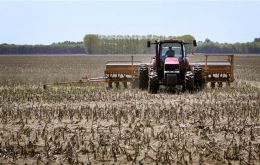
Argentina's Rosario Grains Exchange slashed 14% off its forecast for the country's soy crop on Thursday, saying a drought now in its fourth month would limit the harvest to 40 million tons versus its previous estimate of 46.5 million. Argentina has been suffering dry weather since last November.
